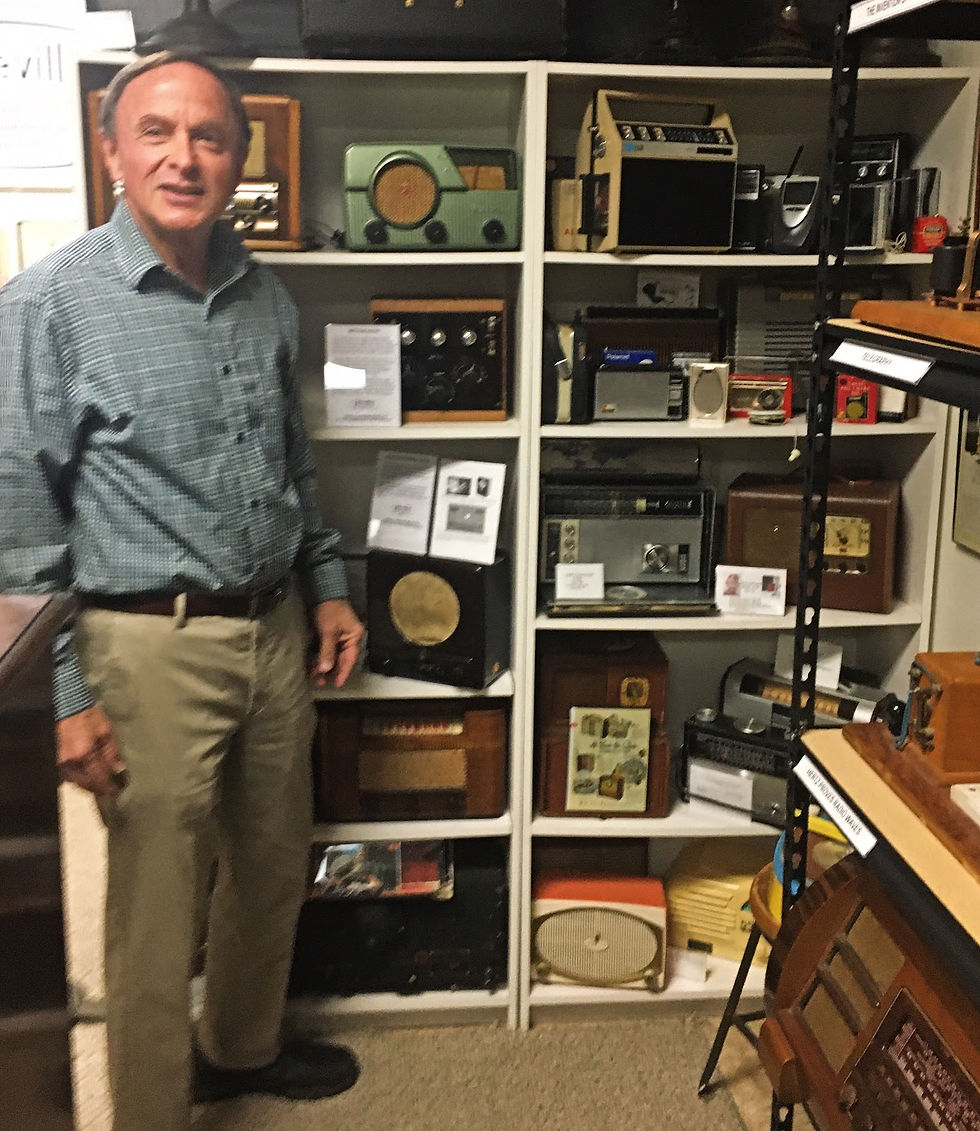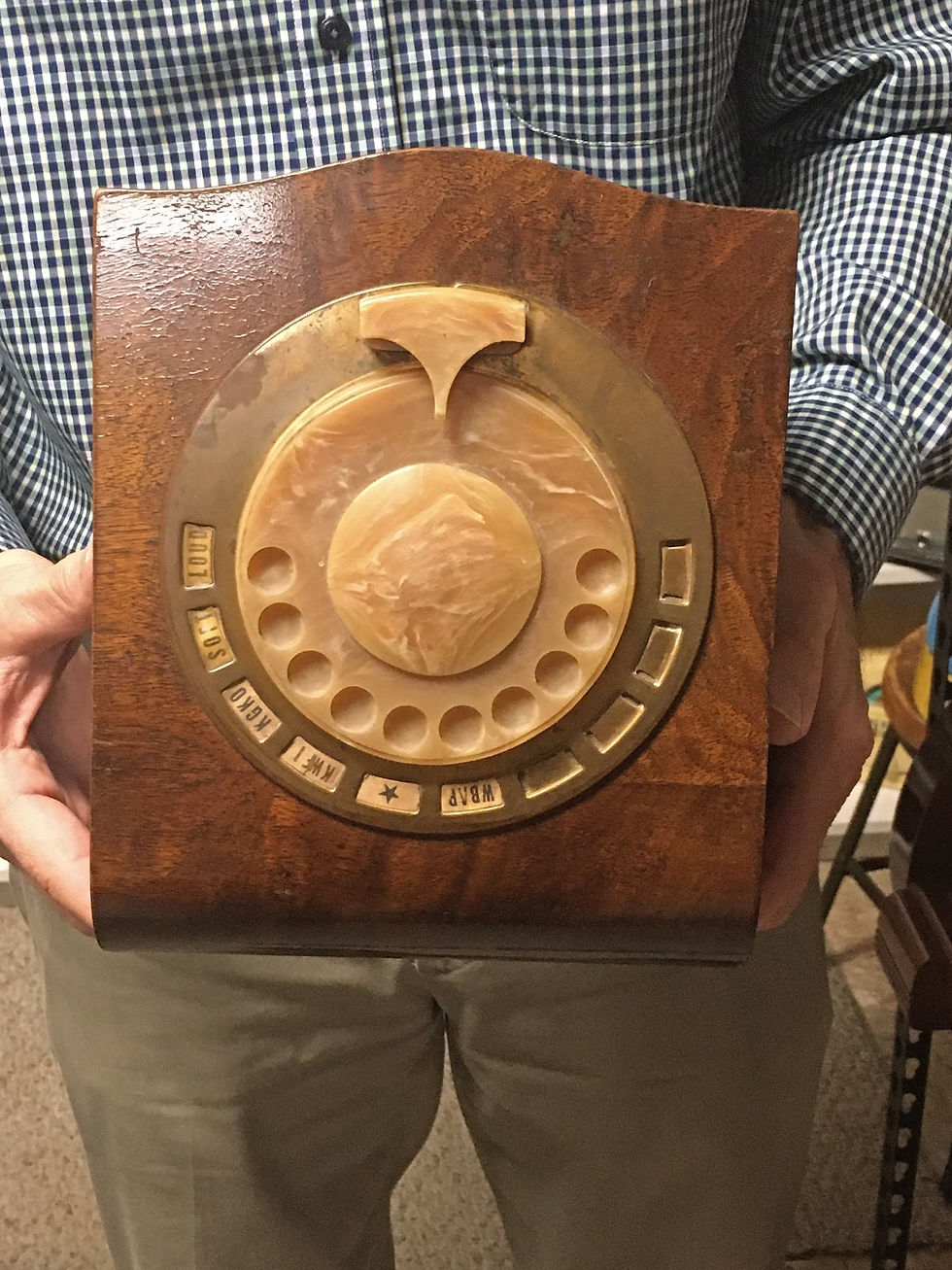Around Asheville: Drop in, turn on, tune in: A visit to the Asheville Radio Museum
- John Shore

- Mar 5, 2022
- 3 min read
Updated: Mar 16, 2022
Have you ever been having coffee with a new acquaintance at Malaprop’s, and said, “Boy, but I’m in the mood to see an almost unfathomable number of pristine old radios,” to which your companion replied, “No way! I’m the curator of the Asheville Radio Museum!”?
No? That’s never happened to you? Hmm. You should probably get your chakras aligned. (Lame non-sequitur, or genius reference to last week’s “Around Asheville”? You be the judge!)
Anyway, let’s skip to the part where recently I really did meet my new curator friend, Stuart Smolkin, at the AVL Radio Museum, which is in room 315 in the Elm building at A-B Tech.
Such was my genuine eagerness to ogle many old radios that I arrived at the museum early. Looking through its window from the building’s hallway, I saw this:

Suddenly overwhelmed with anticipation, I began excitedly dancing on my tippy-toes. Back from the bathroom, I found Stuart unlocking the museum door. “C’mon in!” he said. I tell you, it was like stepping right into the middle of the entire history of American popular culture. They say that a thousand words makes a picture really expensive. Wait — no they don’t. Sorry. They say that a picture of a thousand words isn’t worth the price of the frame. OK, whatever. “They” say way too many things. The point is, here is Stuart next to just one little section of the whole mind-boggling collection of the AVL Radio Museum’s radios:

“Holy cow,” I whispered, slowly turning in place as I took it all in. “There can’t be many places like this in the world.” Stuart quietly beamed. He knows what he and his fellow radio-enthusiast volunteers have wrought since first opening their museum’s door nearly 20 years ago. Twenty years! I believe that back then all the cool kids were listening to this battery-free, fully operational forerunner of today’s iPod, which Stuart — a breathtakingly informed and imminently engaging museum guide, if ever there was one — held up for me just so:

Well, maybe this prototypically portable powerhouse was popular prior to 20 years ago. Then again, given how fast radio technology develops, maybe it was the bees-knees day before yesterday. (OK, so it turns out that simple crystal radios like this one were popular beginning in the 1920’s — not 20 years ago. And yes, I understand how numbers work. Sort of.) Here’s one of the collection’s eye-popping radios from the 1930’s:

If the Great Depression had you too depressed to get off your sofa, no problem! You could change the station on this beauty from anywhere in your house, just by using the handy-dandy wireless radio remote control Stuart’s holding below. Careful not to lose it in your couch cushions!

If hard times forced you to sell your gorgeous radio, all you needed in order to keep listening to your fave-rave broadcasts was some wire, an empty box of Quaker Oatmeal, a little know-how — and voila: you had yourself a completely functional radio! Because why would Stuart just make up something like that?

If having to eat boxes of oatmeal just so you could listen to the radio finally drove you to a life of crime, the police of the day were ready to thwart you with the help of their cutting-edge radio technology. “We have the first police patrol car radio ever used in Asheville, in 1936,” Stuart says, pointing to this:

Can’t you just imagine a police officer in need of assistance screeching his car to a stop, jumping out, running around to the back of his vehicle, and then firing up this bad boy, which would have been bolted to the inside of his trunk? Yeah, me neither. Maybe officers just showed the thing to perps, knowing it would instantly instill in them a dread of the electric chair. That’s probably it. Speaking of disturbing radio usage, here is the museum’s “Volksempfanger”:

In Nazi Germany, there was a Volksempfanger, or “people’ receiver,” in every home. The thing received exactly two stations: National Nazi (a.k.a. Deutschlandsender) and Local Nazi (a.k.a. Reichssender). Getting caught listening to any but those two Nazi propaganda statio
ns would get you either sent to a concentration camp or shot dead on the spot. At the Nuremberg trials, Albert Speer, Nazi Minister of Armaments and War Production, speaking about the Volksempfanger, said, “Through technical devices like the radio . . . 80 million people were deprived of independent thought. It was thereby possible to subject them to the will of one man.” I wholeheartedly recommend a visit to the Asheville Radio Museum. Learn more online at: https://www.avlradiomuseum.org
All photos by John Shore. Originally published on the front of the Sunday "Living" section of the Asheville Citizen-Times newspaper (part of the USA Today Network) on Feb. 30, 2020.





Comments